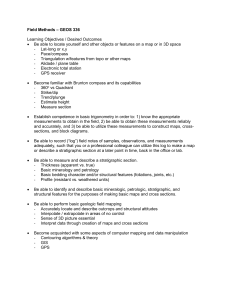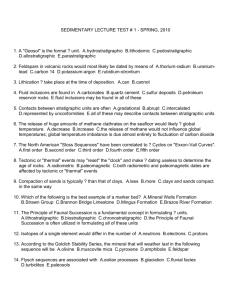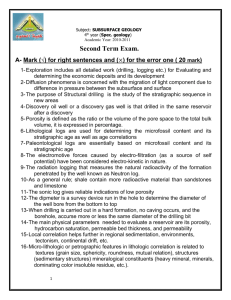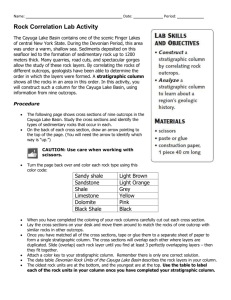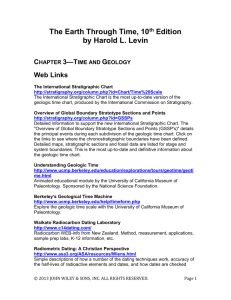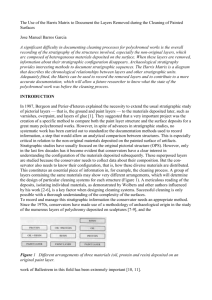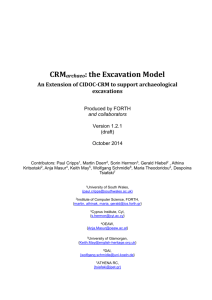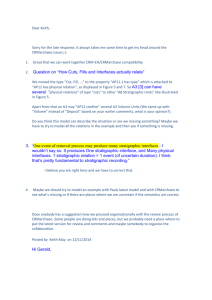Introduction The following definitions are for a term that is used in
advertisement
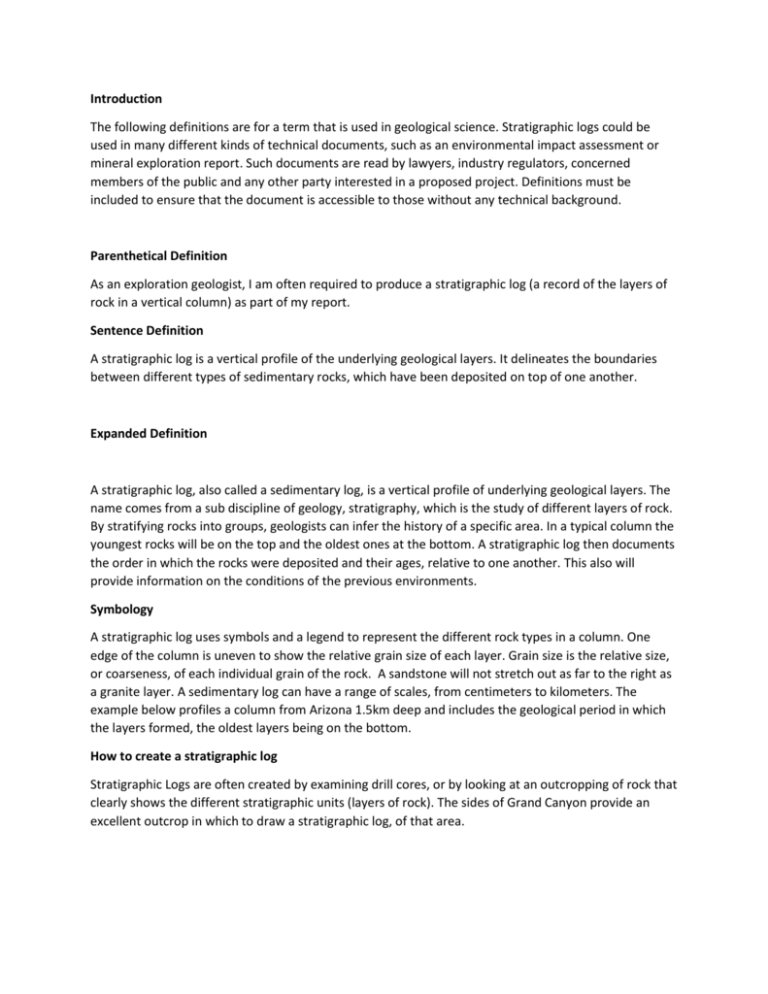
Introduction The following definitions are for a term that is used in geological science. Stratigraphic logs could be used in many different kinds of technical documents, such as an environmental impact assessment or mineral exploration report. Such documents are read by lawyers, industry regulators, concerned members of the public and any other party interested in a proposed project. Definitions must be included to ensure that the document is accessible to those without any technical background. Parenthetical Definition As an exploration geologist, I am often required to produce a stratigraphic log (a record of the layers of rock in a vertical column) as part of my report. Sentence Definition A stratigraphic log is a vertical profile of the underlying geological layers. It delineates the boundaries between different types of sedimentary rocks, which have been deposited on top of one another. Expanded Definition A stratigraphic log, also called a sedimentary log, is a vertical profile of underlying geological layers. The name comes from a sub discipline of geology, stratigraphy, which is the study of different layers of rock. By stratifying rocks into groups, geologists can infer the history of a specific area. In a typical column the youngest rocks will be on the top and the oldest ones at the bottom. A stratigraphic log then documents the order in which the rocks were deposited and their ages, relative to one another. This also will provide information on the conditions of the previous environments. Symbology A stratigraphic log uses symbols and a legend to represent the different rock types in a column. One edge of the column is uneven to show the relative grain size of each layer. Grain size is the relative size, or coarseness, of each individual grain of the rock. A sandstone will not stretch out as far to the right as a granite layer. A sedimentary log can have a range of scales, from centimeters to kilometers. The example below profiles a column from Arizona 1.5km deep and includes the geological period in which the layers formed, the oldest layers being on the bottom. How to create a stratigraphic log Stratigraphic Logs are often created by examining drill cores, or by looking at an outcropping of rock that clearly shows the different stratigraphic units (layers of rock). The sides of Grand Canyon provide an excellent outcrop in which to draw a stratigraphic log, of that area. Figure 1 is a large scale stratigraphic log of eastern Arizona (Miocic). Not Topography A stratigraphic log is not a topographical description. It does not include the slope and dip (the slant) of the specific layers. It only shows the stacking of the stratigraphic units, relative to one another. It is similar to a cross section of a group of rocks, but only highlights a small column and has no horizontal extent. It also provides more information than a cross section, such as the grain size and a legend of rock type. Conclusion Stratigraphic logs are used by a wide variety of professionals, but their purpose is always the same. They describe the types of soil and rock in a given area. Their development and application is crucial to many geological projects. Works Cited Harper, David, and Michael Benton. "Introduction to paleobiology and the fossil record." (2009): 207. Miocic, Johannes. "Being a Power-socket Geologist." Jojomio. Wordpress, 11 Sept. 2012. Web. 22 Jan. 2016. O'Connor, Jim E., et al. "A 4500-year record of large floods on the Colorado River in the Grand Canyon, Arizona." The Journal of Geology (1994): 1-9.
